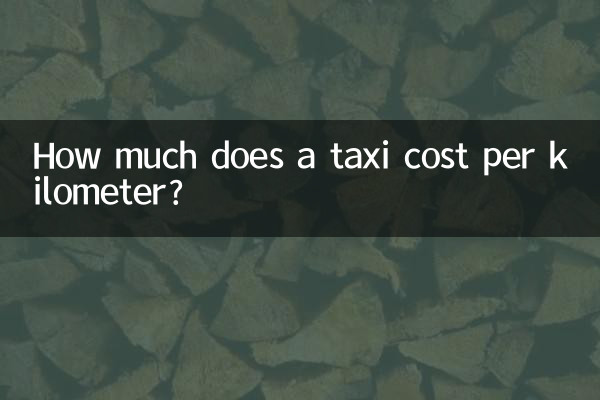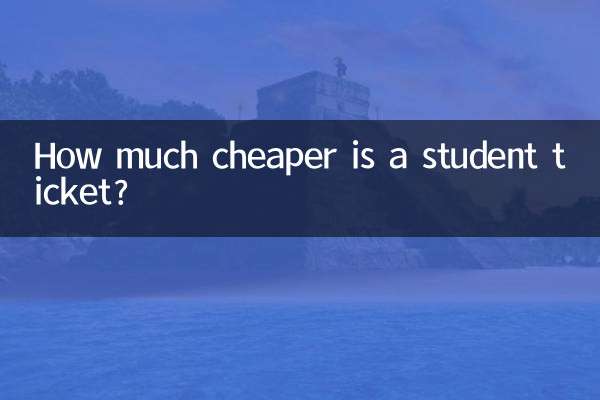How much does a taxi cost per kilometer? Comparison of pricing in popular cities across the country and analysis of recent hotspot correlations
Recently, the issue of taxi pricing has once again become a hot topic on social platforms. This article combines hot events across the network in the past 10 days to sort out taxi pricing standards in major cities across the country, and analyzes the impact of oil price fluctuations and the popularity of new energy vehicles on the industry.
1. The relationship between popular events in 2024 and the taxi industry

1. Rising international oil prices trigger discussions on freight rate adjustments
2. Promote new energy taxi subsidy policies in many places
3. Shared travel platform launches "taxi fixed price" service
4. Controversy over air conditioning surcharges in hot weather
2. Comparison of taxi pricing data in key cities across the country
| city | Starting price | Daytime unit price (yuan/km) | Night unit price (yuan/km) | fuel surcharge |
|---|---|---|---|---|
| Beijing | 13 yuan/3 kilometers | 2.3 | 2.9 | None |
| Shanghai | 14 yuan/3 kilometers | 2.5 | 3.1 | 1 yuan |
| Guangzhou | 12 yuan/3 kilometers | 2.6 | 3.2 | None |
| Shenzhen | 10 yuan/2 kilometers | 2.7 | 3.3 | None |
| Chengdu | 9 yuan/2 kilometers | 1.9 | 2.3 | None |
| Hangzhou | 13 yuan/3 kilometers | 2.5 | 3.0 | None |
| Wuhan | 10 yuan/3 kilometers | 1.8 | 2.2 | None |
| Xi'an | 9 yuan/3 kilometers | 1.5 | 1.8 | None |
3. Three core factors of pricing differences
1.urban consumption level: Economically developed areas generally have higher unit prices
2.operating costs: Including vehicle purchase, insurance, maintenance and other expenses
3.policy orientation: Cities with a high proportion of new energy vehicles have lower operating costs
4. The impact of recent hot topics on taxi prices
| hot events | degree of influence | possible price changes |
|---|---|---|
| No. 92 gasoline exceeds 8 yuan/liter | ★★★ | Fuel surcharge may be reinstated |
| New energy vehicle purchase tax exemption extended | ★★☆ | The proportion of electric taxis increases |
| High temperature red warning in many places | ★☆☆ | Some cities charge air conditioning fees |
| Ride-hailing platform subsidy war | ★★☆ | Traditional taxis or price reduction competition |
5. Practical suggestions for consumers to save money
1.Travel during peak hours: The unit price at night is generally 20%-30% higher than during the day
2.ride sharing service: Multiple platforms launch "taxi-sharing" function
3.price comparison tool: Use map APP to estimate fares
4.Promotion period: Some cities have discounts during morning peak hours
6. Forecast of future development trends of the industry
According to recent industry trends analysis:
1. The proportion of new energy taxis will exceed 50%
2. The dynamic pricing model may be piloted and promoted
3. The price gap between taxis and online ride-hailing services has narrowed.
4. Service quality assessment affects freight rate adjustment
The data statistics in this article are as of July 2024. The specific pricing is subject to the latest notice from the local transportation department. Passengers are advised to pay attention to whether the meter is compliant when taking the bus and keep the invoice for future reference.

check the details

check the details